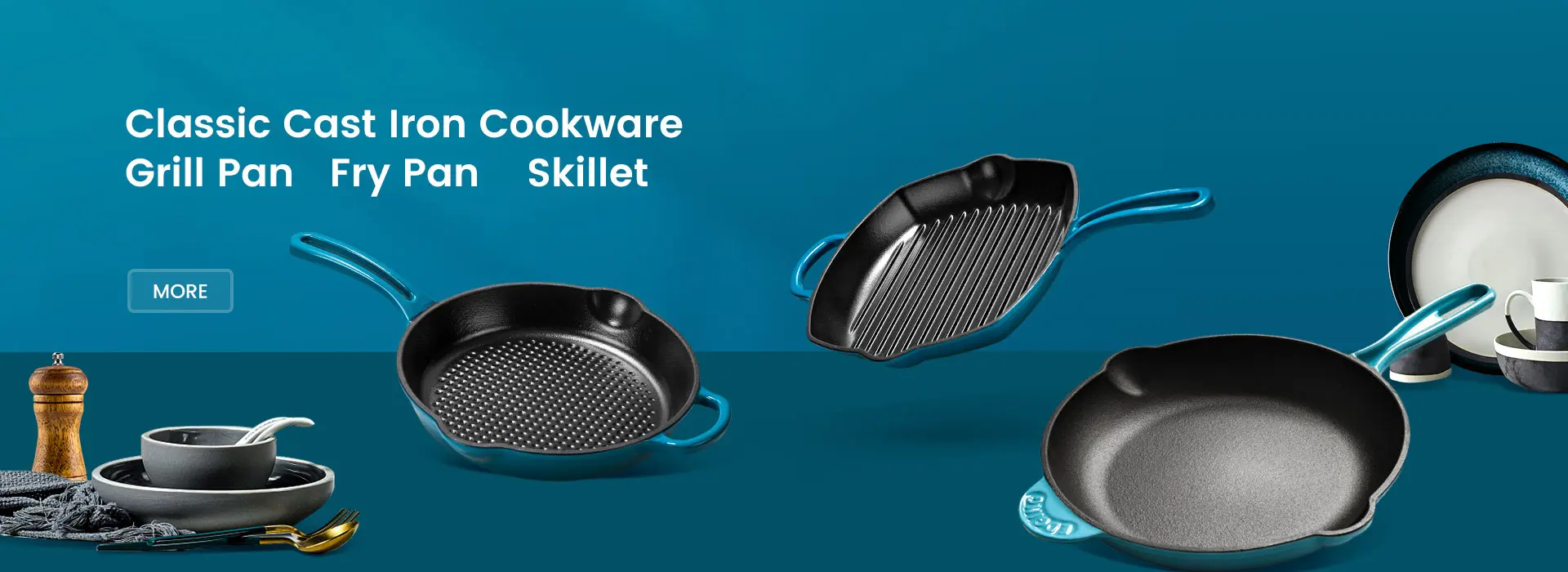- 150m Southwards, West DingWei Road, Nanlou Village, Changan Town, GaoCheng Area, Shijiazhuang, HeBei, China
- monica@foundryasia.com
அக் . 18, 2024 13:42 Back to list
Essential Steps for Preparing Your Cast Iron Skillet for Cooking and Longevity
Prepping a Cast Iron Skillet A Step-by-Step Guide
Cast iron skillets are a staple in many kitchens due to their durability, versatility, and ability to retain heat. Whether you are a seasoned chef or a novice cook, understanding how to prep and maintain a cast iron skillet is crucial for ensuring its longevity and performance. This article will guide you through the steps of prepping your cast iron skillet, ensuring it is ready for all your culinary adventures.
1. Choosing the Right Skillet
The first step in prepping a cast iron skillet begins with selection. When purchasing a skillet, look for one that feels solid and well-made. Consider the size; a 10-12 inch skillet is a great all-purpose choice. If you are considering vintage cast iron, ensure it has no cracks and is free of significant rust. American-made brands, such as Lodge or Griswold, are renowned for their quality.
2. Cleaning Your Skillet
If your cast iron skillet is new, it may come pre-seasoned, but it's still a good idea to clean it before using it for the first time. If you are restoring a vintage skillet, the process is slightly different. For new skillets, wash with warm, soapy water and a stiff brush. While many traditionalists advise against using soap, new skillets can benefit from this first wash. For older skillets, you may need to scrub it with steel wool to remove any rust or old seasoning. Rinse thoroughly and dry immediately to prevent rust.
3. Seasoning Your Skillet
Seasoning is a crucial part of maintaining a cast iron skillet. This process creates a natural, non-stick surface and protects the skillet from moisture. To season your skillet, follow these steps
- Apply Oil Choose an oil with a high smoke point, such as flaxseed, canola, or grapeseed oil. Apply a thin layer of oil to the skillet, inside and out, using a paper towel or cloth. - Removing Excess Oil Wipe away any excess oil. The skillet should appear glossy but not pooled with oil, as too much can result in a sticky surface.
- Bake the Skillet Place the skillet upside down in a preheated oven at 450°F (232°C). Place a baking sheet or aluminum foil on the lower rack to catch any drips. Bake for about an hour. The high heat helps the oil bond to the skillet, forming a hard coating.
odm prepping a cast iron skillet

- Cool Down Turn off the oven and allow the skillet to cool inside. This will further help the seasoning adhere.
4. Maintaining Your Skillet
Proper maintenance is essential for the longevity of your cast iron skillet. After cooking, allow it to cool slightly, then clean it with hot water and a stiff brush. Avoid soap unless necessary, and never soak your skillet in water. For stuck-on food, you can use coarse salt as an abrasive to scrub the surface. Rinse and then dry it thoroughly.
To maintain the seasoning, occasionally apply a light coat of oil after cleaning. This will help keep the non-stick surface intact and prevent rust.
5. Cooking with Your Skillet
Now that your cast iron skillet is prepped and seasoned, it’s time to start cooking! Cast iron skillets are incredibly versatile and can be used for frying, baking, roasting, and more. They excel in high-heat cooking, making them perfect for searing meats or baking cornbread.
One tip for best results when cooking is to preheat the skillet before adding food. The skillet should be hot enough that a drop of water sizzles upon contact. Proper preheating ensures an even cooking surface and prevents sticking.
Conclusion
Prepping a cast iron skillet might seem daunting, but with a little effort, it can become one of your most cherished kitchen tools. By cleaning, seasoning, and maintaining your skillet, you can enjoy the benefits of this culinary classic for years to come. Remember, every time you cook, you are essentially adding to the skillet's seasoning, enhancing its non-stick properties. So embrace the process, and happy cooking!
-
Blue Cast Iron Dutch Oven – Premium Enamel Cookware for Kitchen & Baking
NewsJul.07,2025
-
Best Enamel Dutch Oven for Bread - White Enamel Cast Iron Dutch Oven Service & Pricelist
NewsJul.07,2025
-
3.5 Qt Enameled Cast Iron Dutch Oven – Durable, Versatile & Stylish Cookware for Every Kitchen
NewsJul.07,2025
-
6 Qt Dutch Oven with Lid – Versatile Cooking, Durable Cast Iron Pot Oven Safe, Even Heat
NewsJul.06,2025
-
Non Stick Cast Iron Skillet – Ultimate Non Stick Performance & Durability
NewsJul.06,2025
-
Pumpkin Enameled Cast Iron Dutch Oven – Stylish & Durable Cookware for Your Kitchen
NewsJul.06,2025